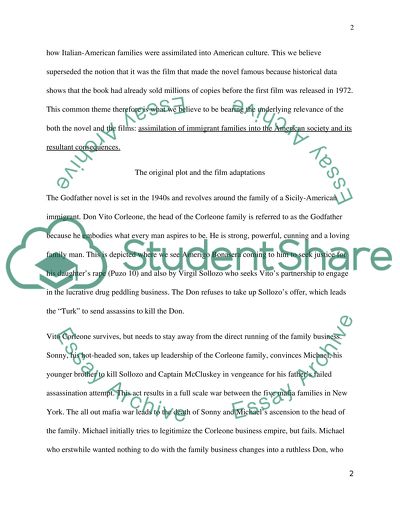Cite this document
(“The Godfather by Mario Puzo, A Comparison of novel and film Essay”, n.d.)
Retrieved from https://studentshare.org/environmental-studies/1406256-the-godfather-by-mario-puzo-a-comparison-of-novel
Retrieved from https://studentshare.org/environmental-studies/1406256-the-godfather-by-mario-puzo-a-comparison-of-novel
(The Godfather by Mario Puzo, A Comparison of Novel and Film Essay)
https://studentshare.org/environmental-studies/1406256-the-godfather-by-mario-puzo-a-comparison-of-novel.
https://studentshare.org/environmental-studies/1406256-the-godfather-by-mario-puzo-a-comparison-of-novel.
“The Godfather by Mario Puzo, A Comparison of Novel and Film Essay”, n.d. https://studentshare.org/environmental-studies/1406256-the-godfather-by-mario-puzo-a-comparison-of-novel.


